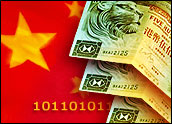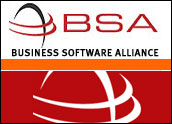
China has agreed to phase out a tax that drove up the prices of U.S.-made semiconductors sold in that fast-growing country, settling a complaint from the World Trade Organization (WTO) and handing U.S. chip makers a key victory.
The WTO filed a complaint against China on March 18th after the United States and others had complained about a value-added tax China has long levied on all semiconductors.
Although all chipmakers had to pay the 17 percent tax, the government refunded all but 3 percent of the tax to Chinese companies, essentially levying a 14 percent tariff on imported processors. The WTO said the measure, which predated China’s membership in the WTO in 2001, was unfair and urged China to back down.
China agreed to phase the tax out, ending it completely by the spring of 2005. The agreement avoids what would have been a lengthy appeal to the WTO.
The U.S. hailed the deal, with Trade Representative Robert Zoellick saying that U.S. companies will be able to win an even bigger share of the booming Chinese market, where North American companies sold some US$2 billion worth of chips in 2003.
Zoellick called China a “voracious consumer of semiconductor chips” and said companies such as Intel and AMD will now enjoy a “level playing field.”
Investing Wisely
The Chinese government says the market for chips is worth about $25 billion a year in the country. The Semiconductor Industry Association (SIA) notes that because U.S. companies control about half the overall market worldwide, they could stand to see their take in China grow substantially with the tariffs lifted.
But John Greenagle, spokesperson for the SIA, said the issue for the industry wasn’t necessarily the amount of sales made in China because that country already imports some 80 percent of the processors it uses each year.
“For us, the important issue was that there was a distortion of investment practices,” Greenagle told the E-Commerce Times. “They were saying, build your next fab in China and you’ll have a 14 percent competitive advantage on price.”
That, he added, is a violation of WTO rules. With the tariff lifted, investments in manufacturing facilities can now occur “where it makes business sense,” Greenagle said.
“If it makes sense to build in China, that’s what should be done, but if the China market can be addressed from existing facilities or new plants elsewhere, that decision should be made by the companies for the right business reasons,” he added. Intel and its top rival, AMD, have both made extensive investments in mainland China in recent years.
“Especially in a time where people are worried about off-shoring of U.S. jobs, forcing companies to build plants overseas is not the right thing to do,” Greenagle said.
Hot-Button Issue
Trade policy in general and trade with China in particular promises to be an issue in the presidential election, especially since data from the first quarter showed the U.S. trade deficit growing to an all-time high. Some economists fear that by importing so much more than it exports, the U.S. risks future economic woes.
President Bush has recently begun promising to take strong stands against countries that make it difficult for U.S. goods to be imported and Commerce Secretary Donald Evans recently visited several countries, including China and Mexico, to strengthen economic ties. Evans reportedly pushed China to comply with WTO rules while visiting that country.
Still, even a slew of agreements like the one with China on chips won’t erase or even significantly erode the trade deficit the U.S. has with the country, Economy.com economist David Ingram told the E-Commerce Times, ensuring the issue will remain a political hot potato.
“As long as the U.S. economy is expanding, consumers here are going to buy more and spend more on foreign goods than their counterparts are on American-made products,” Ingram said. While the U.S. can work to bring the number down, “it’s something that’s going to be in place for a while.”
The U.S. trade deficit with China hit $124 billion last year, the largest with any country.
























































Social Media
See all Social Media